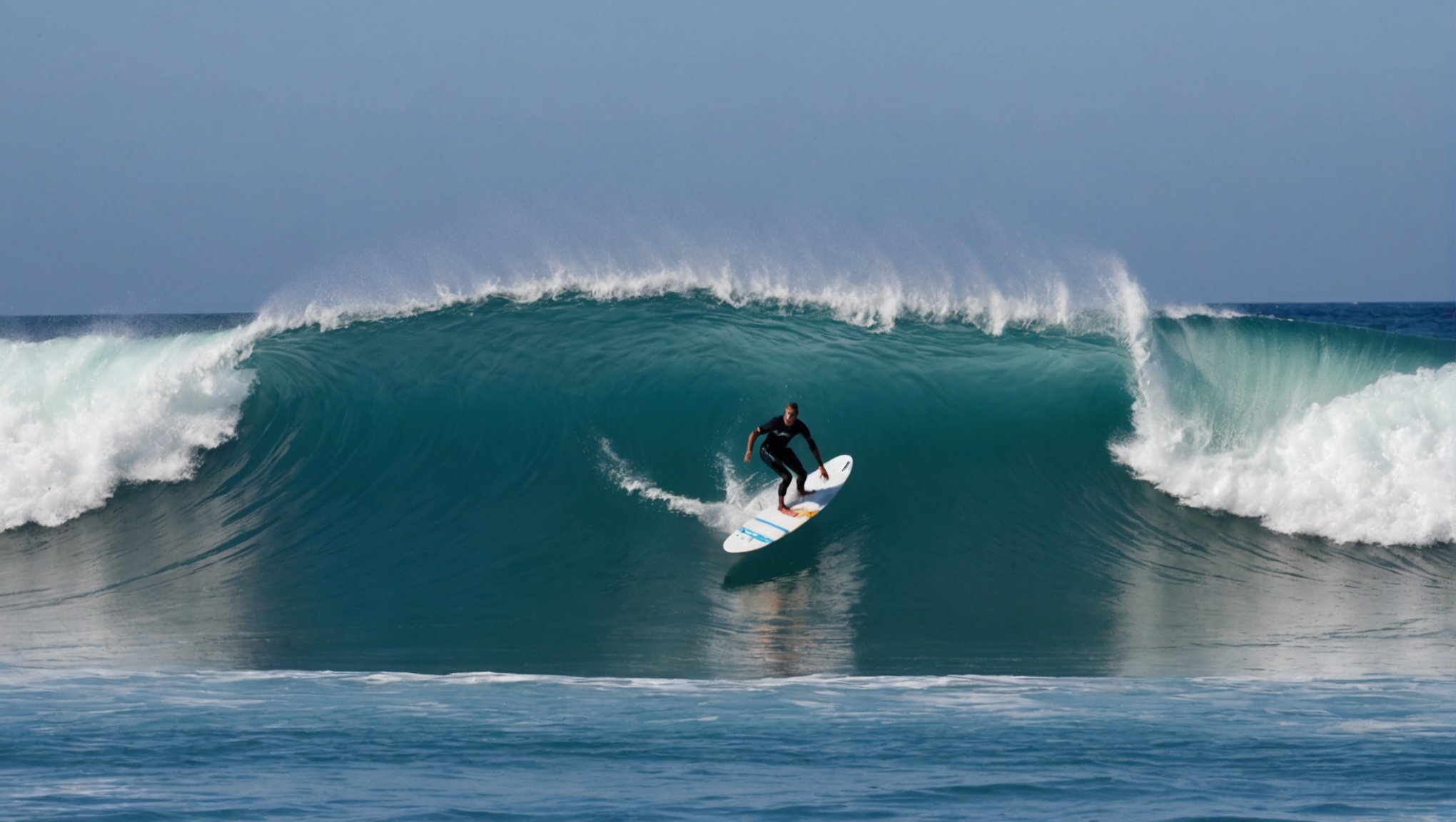Understanding Wave Stability in Surfing
Wave stability plays a crucial role in the dynamics of surfing, directly influencing a surfer’s performance. At its core, wave stability refers to the consistency and predictability of a wave, allowing surfers to anticipate reactions and adjust their movements accordingly. Without stable waves, maintaining balance and executing manoeuvres become significantly challenging.
A variety of factors affect wave stability during surfing. Environmental conditions, such as wind speed and direction, tide levels, and ocean currents, all contribute to the formation and reliability of waves. Local geography, including coastal features like reefs and sandbars, further shapes wave stability. These natural elements combine to create unique surfing dynamics at different locations around the globe.
Additional reading : Maximizing Open Water Performance: Training Strategies for Professional Swimmers”
Body positioning and movement are vital in maintaining stability on a surfboard. By distributing weight appropriately and adjusting stances, surfers can adapt to changing wave conditions, enhancing their control over the surfboard. Core strength and flexibility enable seamless transitions and fluid motions, crucial for riding unstable waves.
Understanding wave stability and how it’s influenced by environmental and physical factors empowers surfers to refine their techniques. Improved stability elevates surfing experiences, optimising performance and satisfaction in this exhilarating sport.
In the same genre : Unlocking Peak Performance: The Power of Mental Imagery for Athletes in High-Pressure Moments
Mechanics of Balance Boards
Balance boards are an intriguing tool that mimic the dynamic motions of surfing, providing a versatile training method appreciated by many. They engage users in activities that replicate the sensation and demands of balancing on a surfboard, enhancing both sensory perception and physical prowess. The key lies in the biomechanics—balance boards require users to keep equilibrium at all times, thereby activating core muscles and improving stability.
Physics is the underlying principle of these boards. As the user shifts weight from one side to the other, they experience centrifugal force and encounter resistance, requiring them to maintain control. This constant adjustment strengthens the musculoskeletal system and improves neural pathways associated with balance, a valuable asset across various sporting disciplines.
There are several types of balance boards, each with unique attributes tailored for different training objectives. The rocker board, with its gentle pivot, is ideal for rehabilitative exercises. The wobble board, distinguished by its circular platform, provides unpredictable movement patterns, promoting agility. Meanwhile, the roller board, featuring a cylindrical base, challenges the individual with a back-and-forth motion, further enhancing lateral stability. Each serves a distinct purpose, offering personalized training sessions to accommodate a wide range of skill levels and goals.
Benefits of Using Balance Boards for Surfers
Balance boards have become a vital tool in the training regime of many surfers. They significantly enhance core strength and stability, which are crucial for maintaining balance while riding waves. This training benefits surfers by mimicking the unstable environment of surfing, engaging the abdominal muscles more effectively than traditional exercises.
Additionally, balance boards improve proprioception, which is the body’s ability to sense its position in space. For surfers, heightened proprioception translates to improved body awareness, allowing them to make subtle adjustments while navigating through challenging surf conditions. This skill is invaluable for executing maneuvers with precision and improving overall performance.
Injury prevention is another essential aspect of incorporating balance boards into surfing training. Regular use can help strengthen the stabilizing muscles around the joints, making them less susceptible to sprains and strains. Furthermore, balance boards are often employed in rehabilitation programs, aiding in the recovery of surfing injuries by slowly reintroducing movement in a safe, controlled manner.
In summary, integrating balance boards into a surfer’s routine offers numerous advantages. They not only bolster strength and coordination but also equip surfers with better control and resilience on the water, ensuring a safer and more rewarding surfing experience.
Training Methods for Professional Surfers
Effective surf training involves a variety of training techniques and surfing drills tailored to enhance performance. Among the most beneficial exercises are balance board routines, which significantly boost a surfer’s stability and coordination.
Balance board exercises cultivate core strength and equilibrium, critical for maintaining control on unstable surfaces. For instance, one popular drill involves simulating turns and carves on the board. This activity mimics real-world surfing conditions, engaging the same muscle groups.
To integrate balance board exercises into a regular surf training routine, it’s essential to schedule consistent sessions, ideally complementing other surf drills and workouts. This ensures a holistic approach, where all aspects of surfing fitness are addressed.
For different skill levels, variations of balance board drills can be employed. Beginners might start with simple standing exercises, while advanced surfers could incorporate complex movements or use balance boards on rolling cylinders to simulate more challenging wave conditions. These variations allow surfers to progressively tackle more difficult tasks, aligning their training with their growing abilities. Consequently, each surfer can personalize their routine, making it both challenging and rewarding.
Real-Life Applications: Case Studies from Professional Surfers
In the world of professional training, balance boards have become an integral tool for enhancing surfing skills. Surfers like Kelly Slater, an 11-time world champion, have vouched for the significance of balance training. Another renowned surfer, Stephanie Gilmore, incorporates balance boards into her routine to improve her stability and core strength.
Success stories abound within the community. These balance boards help athletes enhance their agility, foster better wave navigation, and increase their overall confidence on the water. Professional surfers have reported a noticeable edge in their performance, attributing smoother transitions and quicker recoveries to balance board workouts.
Testimonial Impact
Testimonials from the surfing elite highlight the profound impact of balance training. For instance, a rising star in the surfing scene attributed his faster turn execution to regular balance board sessions. Another testimonial reveals how these sessions assist in muscle memory enhancement, allowing surfers to make split-second decisions more intuitively.
Through these case studies, it’s evident that balance training through the use of boards is not merely a trend but a vital element of modern surfing success. Whether a seasoned pro or an aspiring athlete, integrating balance boards can lead to significant performance upgrades.
Expert Insights on Balance Board Training
The use of balance boards in athletic training has gained the attention of numerous coaches and trainers. Experts highlight that balance boards effectively enhance an athlete’s stability, coordination, and core strength. A vital component of many training methods, balance boards simulate real-world balancing challenges which are particularly beneficial for activities like surfing.
Perspectives from Coaches and Trainers
Coaches report that athletes who incorporate balance boards in their regimen notice marked improvements in their overall performance. The versatility of these boards allows users to modify exercises, catering to different skill levels, from beginners to advanced practitioners. Trainers often emphasize the boards’ role in improving proprioception, which is the body’s ability to perceive its position in space.
Research Findings
Research supports these expert opinions, demonstrating the efficacy of balance boards in sports training. Studies indicate that workouts incorporating balance boards lead to better muscle activation patterns and enhanced neuromuscular control.
Recommendations for Surfers
For surfers, incorporating balance training can significantly enhance wave-riding abilities. Experts suggest starting with simple exercises and gradually increasing complexity as proficiency improves. Regular use can aid in developing the dynamic balance necessary for surfing, thereby translating to a smoother and more controlled performance on the water.













